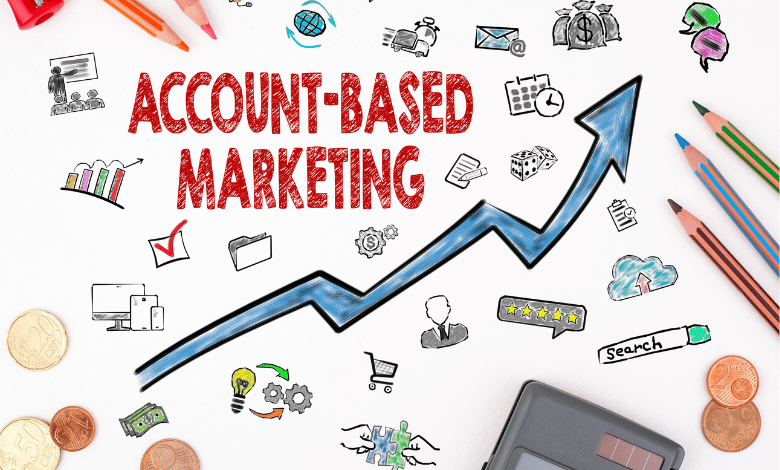What is Account-Based Marketing?
The typical sales and marketing funnel for business-to-business transactions are broken. B2B marketing, in its present iteration, takes a comprehensive strategy to lead creation to accumulate as many leads as is practically achievable.
As per Forrester Research, an overwhelming majority of B2B prospects (over 99%) are never converted into paying customers since the funnel starts to shrink as it moves toward the bottom. This is one of the inherent problems with this strategy.
The Terminal Approach to Account-Based Marketing
Account-based marketing turns the traditional business-to-business sales and advertising funnel on its head. The conventional, lead-based, and inbound-only marketing method is being challenged by the account-based marketing strategy.
An account-based marketing (ABM) approach starts by identifying and prioritizing best-fit accounts, which are accounts that have the most potential to bring in income for your company. This is done rather than beginning with marketing channels to generate leads.
After that, marketers can utilize technology to send targeted messages to decision-makers at these accounts via the channels these individuals are actively using. This marketing effort is reinforced in an ABM program by tailored, one-to-one sales engagement to the same list of target accounts as the marketing outreach.
How many parties are involved in a business-to-business purchasing decision?
According to research conducted by KnowledgeTree, the typical membership of a B2B buying committee ranges from seven to twenty people. Because the number of people participating in decision-making is increasing, the sales cycle is getting longer, which is why single-lead advertising is not the most effective or quickest technique for closing a purchase.
Instead, an increasing number of businesses that sell to other businesses are resorting to account-based marketing (ABM) to get their advertising message in front of all decision-makers across high-value accounts.
What is the History of Account-Based Marketing?
The origins of account-based marketing benchmarks can be traced back to the 1990s when businesses catering to consumers and catering to businesses began to recognize the need for more targeted advertising.
If you keep up with your reading, you may recall that Don Peppers and Martha Rogers released The One to One Future in 1993. This book foresaw the shift from mass marketing to the personalized, one-on-one marketing prevalent today. When customers expressed a need for more customized shopping experiences, several businesses adopted account-based marketing best practices to satisfy those customers’ demands.
Even though the term “account-based marketing” did not come into common usage until 2004, when the ITSMA ABM certification introduced it, numerous businesses had previously been employing the method in some form or another for many years.
Recently, however, account-based marketing (ABM) has started to gain popularity due to the B2B marketing industry’s emphasis on demand creation and return on investment (ROI), as well as the growing number of suppliers offering increasingly powerful ABM solutions.

How Does Account-Based Marketing Function?
An efficient multichannel approach is necessary for effective account-based marketing, which also needs close alignment between a firm’s sales, marketing, and customer success departments. There are hundreds of high-quality ABM solutions. Investigating the many account-based technologies available on the market via the cloud is something you should look into.
Account-based marketing uses digital targeting to communicate with certain best-fit companies, referred to as target accounts. These companies should correspond to your organization’s appropriate customer profile or ICP.
Account-based marketing solutions can be combined with customer relationship management (CRM) or marketing automation tools to facilitate the execution of campaigns directed specifically at the accounts of interest. The truly astonishing aspect of account-based marketing technology is that it enables you to communicate with the contacts you already have in your system and with other key decision-makers who work for your target accounts.
This enables the execution of multichannel programs by selecting the advertisements to be shown to a target demographic across mobile, social, display, and video — and afterward connecting them on their terms. Consequently, with A/B testing on creativity in near real-time, you can determine which campaign worked the most — and obtain evidence to back it up.
Account-based solutions have achieved considerable success because they interact with customers on their terms through digital channels besides email and telephone. ABM is easily scalable because these marketing efforts involve the lead and the overall account.
With the help of ABM software, it is now possible to advertise across personas, sales phases, campaigns, or statuses in a CRM. This makes it simple to interact with and cultivate your target buyers no matter where they are online. And as the concept that “one size fits all” becomes less popular, account-based marketing (ABM) has become a method that must be tested to customize the shopping experience through highly targeted content.

What Are the Benefits of Account-Based Marketing?
Closely coordinated sales and marketing teams
In the initial step of account-based advertising, the marketing and sales teams must identify and agree upon the target accounts. Thus, both teams must concentrate on the same objectives, producing money from target accounts.
Efficient utilization of advertising budget
It is more cost-effective to establish which accounts are perfect for your services or products before you start targeting them. You can then spend your money to contact them on the platforms where they are active, such as on the internet, on social media, and at events, among other places.
Shortening the sales cycle
Account-based marketing helps to solve difficulties with the sales cycle by putting the appropriate messaging in the hands of key decision-makers at target accounts. This, in turn, helps the sales cycle to go along more quickly.
Effective sales conversations
Employing account-based marketing and advertising to target specific accounts better positions your sales team for future talks with their buyers. Before your sales representatives contact your target accounts, the clients will have been introduced to your company’s content.
Improves customer experience
Account-based marketing is customer-centric. As a business person, you are aware that buyers do not anticipate a sales call or marketing email to initiate their inquiry. Rather, consumers prefer to investigate solutions on their own terms and to get vendor messages only when they are important and pertinent.

Check More Of Our Content Down Below
How To Rank Your Videos On Youtube?
Keyword Research In SEO [Ultimate Guide]
